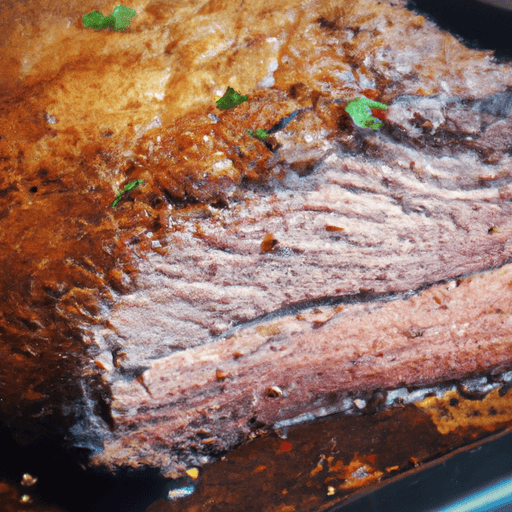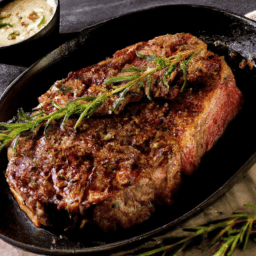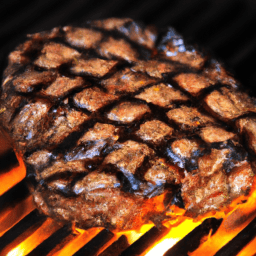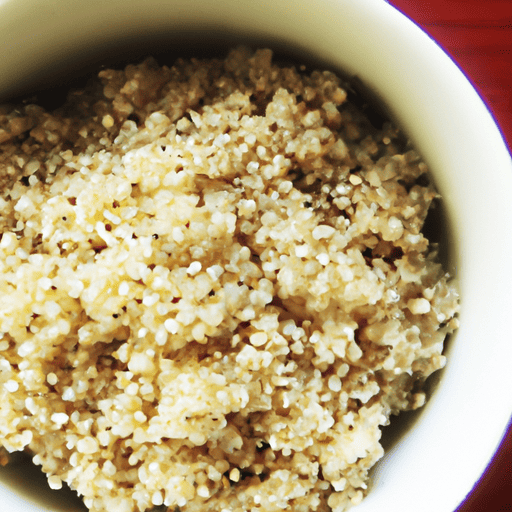Master How To Cook Different Types Of Eggs
If you’re going to master anything in the kitchen, let it be the humble egg.
Why? Because it’s the cornerstone of any self-respecting cook’s repertoire, and it’s the litmus test for skill. Knowing how to cook different types of eggs can reveal more about you than your zodiac sign.
From the elusive sunny-side-up to the perfectly scrambled to the divinely poached, it’s time to level up. So, put on your apron, arm yourself with a non-stick pan, and get ready to channel your inner breakfast samurai. Welcome to the ultimate guide on how to cook different types of eggs. Let’s crack on!
Tools for Cooking Eggs
Cooking eggs might seem like a simple task, but having the right tools can make all the difference. Whether you’re a seasoned chef or a beginner in the kitchen, this list of kitchen essentials will help you master how to cook different types of eggs. All the products listed are available on Amazon for your convenience
| Product | Use | Why It’s Essential |
|---|---|---|
| Non-Stick Frying Pan | Ideal for frying eggs, making omelets, and scrambled eggs. | A non-stick surface ensures that your eggs slide right off the pan, making cooking and cleaning easier. |
| Stainless Steel Whisk | Perfect for beating eggs for scrambled eggs, omelets, or baking. | A good whisk helps incorporate air into the eggs, making them fluffier. |
| Egg Poacher | For making perfectly poached eggs. | Takes the guesswork out of poaching eggs and ensures consistent results. |
| Silicone Spatula | Useful for flipping or stirring eggs. | The silicone material is gentle on non-stick surfaces and is easy to clean. |
| Egg Separator | For recipes that require only egg whites or yolks. | Makes separating eggs quick and mess-free. |
| Mixing Bowls | For beating eggs or mixing ingredients. | A set of mixing bowls of various sizes is versatile and useful for many kitchen tasks. |
With these kitchen tools at your disposal, you’ll be well-equipped with how to cook different type of eggs.
Boiled Eggs
Ingredients Required
- Eggs
- Water
Boiled eggs are a classic breakfast staple that can be enjoyed in various ways. Whether you prefer them soft-boiled or hard-boiled, they are simple to prepare and packed with protein.
Here are some guidelines to help you achieve the perfect boiled eggs.
Guidelines for Cooking Soft-Boiled Eggs
- Start by placing the eggs in a saucepan and covering them with cold water. The water should reach about an inch above the eggs.
- Place the saucepan on the stove over medium heat and bring the water to a boil.
- Once the water is boiling, reduce the heat to low and let the eggs simmer for about 4-5 minutes for a soft-boiled consistency.
- Using a slotted spoon, carefully remove the eggs from the saucepan and transfer them to an ice bath to stop cooking.
- Let the eggs sit in the ice bath for a few minutes, then gently tap them on a hard surface to crack the shell. Peel and enjoy!
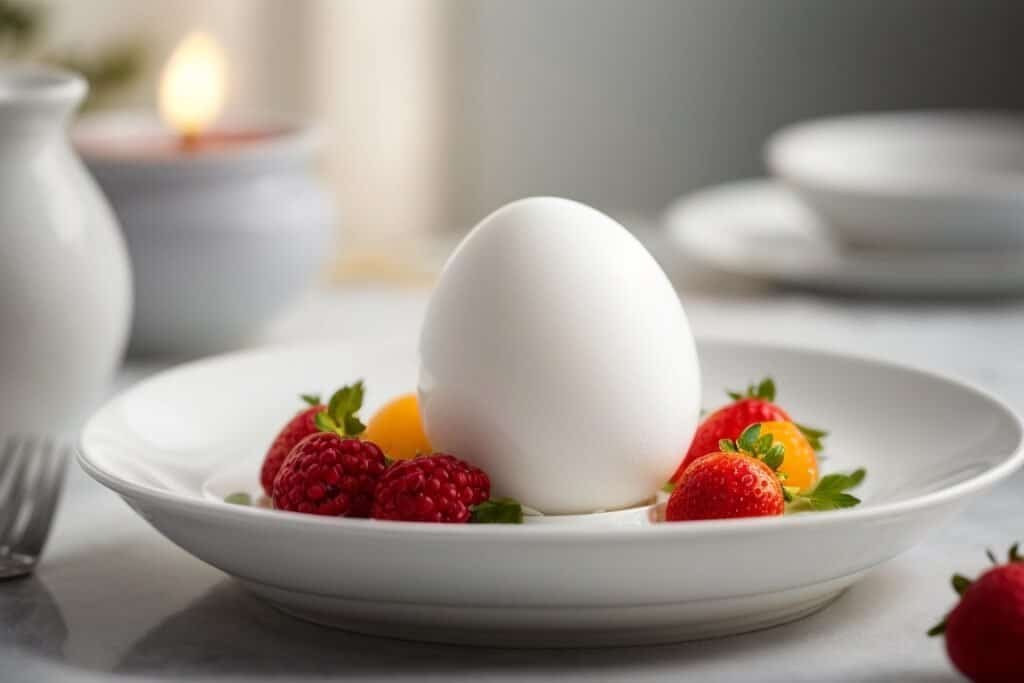
Basics of Cooking Hard-Boiled Eggs
- Place the eggs in a saucepan and cover them with cold water, just like in the soft-boiled eggs method.
- Bring the water to a boil over medium heat.
- Once the water reaches a rolling boil, reduce the heat to low and let the eggs simmer for about 9-12 minutes for a hard-boiled consistency.
- Carefully remove the eggs from the saucepan and transfer them to an ice bath.
- Allow the eggs to cool down completely in the ice bath before peeling. To peel, gently tap the eggs on a hard surface and start peeling from the wider end.
Tips for Peeling
Peeling boiled eggs can sometimes be a bit tricky, but with these tips, you’ll be able to achieve perfectly peeled eggs every time:
- Use older eggs: Fresh eggs can be more difficult to peel, so it’s best to use eggs that have been in your refrigerator for a week or two.
- Shock in ice water: Transferring the boiled eggs to an ice bath helps to cool them down quickly and creates a slight shock that can make the peeling process easier.
- Roll gently: Instead of cracking the shell all at once, gently roll the boiled egg on a hard surface to create small cracks. This will make it much easier to peel.
With these simple guidelines and tips, you’ll master the art of boiling eggs and enjoy delicious and nutritious breakfasts.
The Best Way to Cook Hard-Boiled Eggs (Steaming Method)
- Preparation: Make sure you have large eggs that are cold from the refrigerator and have no cracks.
- Boil Water: In a medium saucepan, bring one inch of water to a rolling boil over high heat.
- Place Eggs in Steamer: Put six large eggs in a steamer basket. If you don’t have a steamer basket, you can gently place the eggs in the boiling water using a spoon or tongs.
- Cook Eggs: Transfer the steamer basket to the saucepan. Cover the saucepan and reduce the heat to medium. Small wisps of steam should escape from beneath the lid. Cook the eggs for 13 minutes.
- Prepare Ice Bath: While the eggs are almost done cooking, combine two cups of ice cubes and two cups of cold water in a medium bowl.
- Transfer to Ice Bath: Move the cooked eggs to the ice bath using tongs or a spoon. Let them sit for 15 minutes.
- Peeling: The eggs can be peeled immediately or stored in their shells and peeled when needed.
Additional Tips
- You can use this method for fewer than six eggs without altering the timing.
- You can also double this recipe as long as you use a pot and steamer basket large enough to hold the eggs in a single layer.
This method ensures that the eggs are perfectly cooked and super easy to peel.
Fried Eggs
Ingredients Required
- Eggs
- Butter or cooking oil
- Salt and pepper (optional)
Another popular way to prepare eggs is by frying them. Whether you like them sunny-side up, over easy, or over hard, fried eggs offer a beautiful runny yolk and a crispy edge that can enhance any meal.
Steps in Cooking Sunny-Side-Up Eggs

- Start by heating a non-stick skillet over medium-low heat. Add a small amount of butter or cooking oil to prevent the eggs from sticking.
- Crack the eggs into the skillet, making sure to keep them separate.
- Sprinkle some salt and pepper over the eggs, if desired.
- Cover the skillet with a lid and let the eggs cook for about 2-3 minutes for a runny yolk.
- Once the whites are cooked, carefully remove the eggs from the skillet and serve them right away.
Steps in Cooking Over Easy Eggs
- Follow the same steps as for sunny-side-up eggs, but slightly increase the cooking time on the first side to about 3-4 minutes.
- Carefully flip the eggs using a spatula, not breaking the yolk.
- Cook the eggs for another 1-2 minutes on the second side, ensuring that the yolk remains slightly runny.
- Transfer the eggs to a plate and season with salt and pepper before serving.
Steps in Cooking Over Hard Eggs
- Start by following the steps for sunny-side-up eggs, but increase the cooking time on the first side to about 4-5 minutes.
- Carefully flip the eggs using a spatula, ensuring that the yolk breaks. Cook for an additional 3-4 minutes on the second side until the yolk is completely cooked through.
- Once both sides are cooked to your liking, transfer the eggs to a plate and season with salt and pepper.
Experiment with different variations and cooking times to find your perfect fried egg preference. Whether you enjoy a runny yolk in your sunny-side-up eggs or a fully cooked yolk in your over-hard eggs, fried eggs are a versatile option for any meal.
Scrambled Eggs

Ingredients Required
- Eggs
- Butter or cooking oil
- Salt and pepper (optional)
Scrambled eggs offer a fluffy and creamy texture, making them a beloved breakfast or brunch dish. Here’s the basic method for cooking scrambled eggs and some ideas for adding variations and flavors.
Basic Method for Cooking Scrambled Eggs
- Crack the desired number of eggs into a bowl and whisk them until the yolks and whites are well combined.
- Heat a non-stick skillet over medium heat and add a small amount of butter or cooking oil.
- Pour the whisked eggs into the skillet and let them cook for a few seconds until the edges start to set.
- Gently stir the eggs with a spatula, pushing them from the edges towards the center.
- Continue stirring the eggs occasionally until they are mostly set but still slightly runny.
- Remove the skillet from the heat, as the residual heat will continue to cook the eggs.
- Season the scrambled eggs with salt and pepper if desired, and serve immediately.
To level up your scrambled egg game, check out this video:
Adding Variations and Flavors
Scrambled eggs are a blank canvas that can be customized with various ingredients and flavors. Here are some ideas to elevate your scrambled eggs:
- Cheese: Add shredded cheese, such as cheddar or feta, to the whisked eggs before cooking. The heat will melt the cheese, creating a deliciously gooey texture.
- Herbs and spices: Experiment with different herbs and spices like chives, parsley, paprika, or cayenne pepper to add a burst of flavor.
- Veggies: Mix in sautéed vegetables, such as onions, bell peppers, or spinach, to make your scrambled eggs more colorful and nutritious.
- Protein: Incorporate cooked bacon, ham, or smoked salmon for added protein and a savory twist.
Get creative with your scrambled eggs and tailor them to your taste preferences. You can transform a simple dish into a gourmet breakfast with just a few additional ingredients.
Poached Eggs
Ingredients Required
- Eggs
- Water
- Vinegar (optional)
- Salt
Poached eggs are a versatile and elegant option that can be enjoyed on their own or used as a topping for various dishes like salads, avocado toast, or eggs Benedict. Here’s how to cook perfect poached eggs on the stovetop and in the microwave and a technique to achieve perfectly round poached eggs.
Steps in Cooking Basic Poached Eggs
- Fill a large saucepan with about two inches of water and bring it to a gentle simmer.
- Add a splash of vinegar and a pinch of salt to the water. The vinegar helps to coagulate the egg whites, resulting in a neater poached egg, but it’s optional.
- Crack the eggs into separate small bowls or ramekins.
- Create a gentle whirlpool in the simmering water using a spoon. This will help to wrap the egg whites around the yolk for a perfectly shaped poached egg.
- Carefully slide the eggs, one by one, into the center of the whirlpool. The swirling water will help to keep the eggs together.
- Cook the eggs for about 3-4 minutes for a runny yolk or 5-6 minutes for a slightly firmer yolk.
- Using a slotted spoon, carefully remove the poached eggs from the water and transfer them to a paper towel to drain any excess water.
How to Poach Eggs in a Microwave
- Fill a microwave-safe bowl with about half a cup of water.
- Crack the eggs into the bowl, ensuring that they are fully submerged in water.
- Place a microwave-safe plate on top of the bowl to cover it partially, allowing steam to escape.
- Microwave the eggs on high power for about 1-2 minutes, depending on your desired doneness.
- Carefully remove the bowl from the microwave and use a slotted spoon to transfer the poached eggs to a paper towel.
How to Make Perfectly Round Poached Eggs
If you want to achieve beautifully round poached eggs, here’s a technique that can help:
- Start by cracking the eggs into small bowls or ramekins.
- Fill a large saucepan with about two inches of water and bring it to a gentle simmer.
- While the water is coming to a simmer, prepare a piece of plastic wrap or a kitchen cling film.
- Place the plastic wrap over a small bowl or glass, ensuring it is stretched tight and smooth.
- Lightly grease the plastic wrap with cooking oil or non-stick spray.
- Carefully transfer one egg from the bowl into the plastic wrap-lined bowl or glass.
- Gather the corners of the plastic wrap and twist them tightly to create a small “egg pouch.”
- Secure the twisted plastic wrap with a rubber band or kitchen twine.
- Repeat the process with the remaining eggs.
- Gently place the plastic wrap-wrapped eggs into the simmering water and cook for about 3-4 minutes.
- Using a slotted spoon, carefully remove the eggs from the water and unwrap them from the plastic wrap.
With these methods, you can enjoy perfectly poached eggs prepared on the stovetop or microwave. Impress your guests or treat yourself to a restaurant-quality dish with these elegant and delicious poached eggs.
Omelets
Ingredients Required
- Eggs
- Butter or cooking oil
- Salt and pepper (optional)
Omelets are a versatile dish that can be customized with an array of fillings, making them suitable for breakfast, lunch, or dinner. Let’s explore how to cook a classic French omelette and some filling ideas and tips for making the best omelets.
How to Cook a Classic French Omelette
- Crack the desired number of eggs into a bowl and whisk them until well combined. Season with salt and pepper, if desired.
- Heat a non-stick skillet over medium-low heat and add a small amount of butter or cooking oil.
- Pour the whisked eggs into the skillet and let them cook for a few seconds until the edges start to set.
- Using a spatula, gently push the cooked edges towards the center while tilting the skillet to allow the liquid eggs to flow underneath.
- Repeat this motion around the edges until the eggs are mostly set but slightly runny in the center.
- Add your desired fillings to half the omelet, such as cheese, sautéed vegetables, or cooked meat.
- Carefully fold the other half of the omelet over the fillings, creating a crescent shape.
- Let the omelet cook for another minute to ensure the fillings are heated.
- Slide the omelet onto a plate, cut it in half if desired, and serve immediately.
Filling Ideas for Omelettes
The filling options for omelets are endless, and you can get creative based on your preferences. Here are some ideas to inspire you:
- Cheese: Incorporate your favorite types of cheese, such as cheddar, feta, or goat cheese, to add a creamy and flavorful element to your omelet.
- Vegetables: Sautéed vegetables like mushrooms, onions, bell peppers, spinach, or tomatoes can provide a burst of color and extra nutrients.
- Meat: Cooked bacon, ham, sausage, or smoked salmon can be great additions to a heartier omelet.
- Herbs and spices: Enhance the flavor of your omelet by adding herbs like parsley, chives, or basil, along with spices like paprika or cayenne pepper.
Experiment with different combinations to find your favorite omelet filling. Consider incorporating leftover ingredients from previous meals to minimize food waste and create delicious flavor profiles.
Tips and Tricks for Making the Best Omelettes
Here are some additional tips to help you achieve omelette perfection:
- Use a non-stick skillet: A non-stick skillet ensures that the omelette slides out easily and avoids sticking, simplifying the cooking process.
- Opt for medium-low heat: Cooking the omelette over medium-low heat prevents the eggs from browning too quickly and allows for a more even cooking.
- Don’t overfill: Be mindful of the amount of filling you add to the omelette. Overfilling can make it challenging to fold and flip the omelette without it breaking.
- Practice makes perfect: Don’t be discouraged if your first few attempts don’t come out perfectly. Omelette-making takes some practice, so keep trying, and soon you’ll master the technique.
With the classic French omelet method, endless filling possibilities, and a few helpful tips, you’ll be able to enjoy delicious and customizable omelets for any occasion.
Baked Eggs
Ingredients Required
- Eggs
- Salt and pepper (optional)
- Cooking oil or butter
Baked eggs offer a unique twist to traditional egg preparation, creating a satisfying and effortless dish. Whether you choose to bake them in the oven or inside an avocado, or want to try making baked egg muffins, here’s how to make each variation.
How to Bake Eggs in an Oven
- Preheat your oven to 375°F (190°C) and lightly grease individual oven-safe ramekins or a muffin tin.
- Crack one egg into each greased ramekin or muffin cup. Be careful to keep the yolks intact.
- Season with a pinch of salt and pepper, if desired.
- Place the ramekins or muffin tin on a baking sheet for easier handling.
- Bake the eggs in the preheated oven for about 12-15 minutes or until the whites are set, but the yolks are still slightly runny.
- Remove the baked eggs from the oven and let them cool for a few minutes before serving.
How to Bake Eggs in Avocado
- Preheat your oven to 425°F (220°C) and cut ripe avocados in half lengthwise. Remove the pits and scoop out a small amount of flesh to create a larger cavity for the egg.
- Place the avocado halves on a baking sheet or in an oven-safe dish to prevent them from tipping over.
- Crack one egg into each avocado half, ensuring that the yolk stays intact within the cavity.
- Season with salt and pepper, or other desired seasonings.
- Bake the avocado halves in the preheated oven for about 15-20 minutes or until the egg whites are fully cooked and the yolks reach your desired consistency.
- Remove the baked eggs in avocado from the oven and allow them to cool for a few minutes before serving.
How to Make Baked Egg Muffins
- Preheat your oven to 350°F (175°C) and lightly grease a muffin tin.
- Beat the desired number of eggs in a mixing bowl and season with salt and pepper, if desired.
- Optional: Add your choice of ingredients, such as cooked bacon, sautéed vegetables, cheese, or herbs, to each muffin cup.
- Pour the beaten eggs into each muffin cup, filling them about three-fourths of the way.
- Gently stir the ingredients in each muffin cup with a fork to combine.
- Bake the egg muffins in the preheated oven for about 15-20 minutes or until the eggs are set and cooked through.
- Remove the baked egg muffins from the oven and let them cool for a few minutes before removing them from the muffin tin.
Baked eggs offer a convenient and delicious way to enjoy eggs. Whether you prefer baking them in the oven, inside avocado halves, or in the form of muffins, these variations are simple to make and can be customized to your taste.

Deviled Eggs
Ingredients Required
- Eggs
- Mayonnaise
- Mustard
- Salt and pepper
- Paprika or other desired garnishes
Deviled eggs are a delightful appetizer or side dish that can be dressed up with various flavors and presentations. Here’s a basic method for making deviled eggs, along with ideas for filling variations and optional garnishes.
Method for Basic Deviled Eggs
- Start by hard-boiling the eggs using the guidelines provided in the boiled eggs section.
- Once the eggs have cooled and been peeled, carefully slice them in half lengthwise.
- Gently remove the cooked yolks from the eggs and place them in a mixing bowl.
- Mash the yolks with a fork until they reach a crumbly texture.
- Add mayonnaise, mustard, salt, and pepper to the mashed yolks, adjusting the amounts to your taste.
- Stir the ingredients together until well combined and smooth. The mixture should hold together but remain creamy.
- Spoon or pipe the yolk mixture back into the hollowed egg white halves.
- Optionally, sprinkle the deviled eggs with paprika or other desired garnishes for added flavor and presentation.
- Refrigerate the deviled eggs for at least 30 minutes to allow the flavors to meld together before serving.
Variations and Options for Deviled Egg Fillings
Deviled eggs can be customized with a variety of fillings to suit different palates and preferences. Here are some ideas to inspire you:
- Classic: Stick to the basic method but add a touch of Dijon mustard and a sprinkle of paprika on top for a timeless deviled egg.
- Smoky: Incorporate finely chopped smoked salmon, crumbled bacon, or smoked paprika into the yolk mixture for a smoky twist.
- Spicy: Amp up the heat by adding hot sauce, chopped jalapeños, or a pinch of cayenne pepper to the filling.
- Herbed: Mix in fresh herbs like chives, parsley, dill, or tarragon for a burst of freshness and added complexity of flavor.
- Sweet and Tangy: Add a touch of sweetness by blending in a small amount of pickle relish, honey mustard, or a sprinkle of sugar.
Get creative, experiment with different combinations, and let your taste buds guide you in creating delicious and unique deviled eggs.
Egg Salad
Ingredients Required
- Eggs
- Mayonnaise
- Mustard
- Salt and pepper
- Chopped celery (optional)
- Chopped green onions (optional)
- Chopped dill pickles (optional)
- Fresh herbs (optional)
Egg salad is a versatile dish perfect for sandwiches, salads, or a spread on crackers or toast. Here’s a basic recipe for egg salad and different ways to serve and customize it.
Basic Recipe for Egg Salad
- Start by hard-boiling the eggs using the guidelines provided in the boiled eggs section.
- Once the eggs have cooled and been peeled, chop them into small pieces.
- Combine the chopped eggs with mayonnaise and mustard in a mixing bowl, adjusting the amounts based on your desired creaminess.
- Season the mixture with salt and pepper to taste, and stir until well combined.
- Optional: Add chopped celery, green onions, dill pickles, or fresh herbs like parsley or dill for added texture and flavor. Mix them into the egg salad.
- Refrigerate the egg salad for at least 30 minutes to allow the flavors to meld together before serving.
Different Ways to Serve Egg Salad
Egg salad can be enjoyed in various ways, and here are a few suggestions to get you started:
- Classic Egg Salad Sandwich: Spread the egg salad between two slices of bread, add lettuce and sliced tomatoes if desired, and enjoy a classic and satisfying sandwich.
- Lettuce Wraps: Spoon the egg salad onto large lettuce leaves, such as butter lettuce or romaine hearts, and roll them up for a lighter and low-carb option.
- Salad Topper: Add a scoop of egg salad onto a bed of mixed greens or your favorite salad ingredients for a protein-packed addition.
- Canapés or Crackers: Spread the egg salad onto small toasts, crackers, or cucumber slices for elegant appetizers during parties or gatherings.
- Stuffed Tomatoes or Avocados: Hollow out ripe tomatoes or avocados and fill them with egg salad for a refreshing and nutritious dish.
Feel free to experiment with your own variations by incorporating different seasonings, herbs, or additional ingredients to suit your tastes.
Egg Sandwiches
Ingredients Required
- Eggs
- Bread
- Butter or cooking oil
- Salt and pepper (optional)
Egg sandwiches are a classic and versatile option for breakfast or lunch. Whether you prefer an egg salad sandwich, a fried egg sandwich, or a scrambled egg sandwich, here’s how to make each variation.

How to Make an Egg Salad Sandwich
- Start by preparing the egg salad using the guidelines provided in the previous section.
- Once the egg salad is ready, spread it onto two slices of bread.
- Optional: Add lettuce, sliced tomatoes, or any other desired toppings to enhance the flavors and textures.
- Place the second slice of bread on top to complete the sandwich.
- If desired, cut the sandwich into halves or quarters, and serve it immediately. It’s ready to be enjoyed!

How to Make a Fried Egg Sandwich
- Heat a non-stick skillet over medium heat and melt a small amount of butter or cooking oil.
- Crack an egg into the skillet and let it cook undisturbed for a few minutes until the whites are set.
- Season the egg with salt and pepper, if desired.
- Carefully flip the egg using a spatula and cook for an additional minute or until the yolk reaches your preferred doneness.
- Toast two slices of bread and spread butter or a condiment of your choice, such as mayonnaise or mustard.
- Place the fried egg onto one slice of bread and add any desired toppings, like cheese, bacon, or avocado.
- Cover the sandwich with the second slice of bread and gently press down to hold everything together.
- Cut the sandwich, if desired, and savor every bite of this delicious fried egg sandwich.

How to Make a Scramble Egg Sandwich
- Crack the desired number of eggs into a bowl and whisk them until well combined.
- Heat a non-stick skillet over medium heat and melt a small amount of butter or cooking oil.
- Pour the whisked eggs into the skillet and let them cook undisturbed for a few seconds until the edges start to set.
- Gently stir the eggs with a spatula, continue cooking and stirring until they are scrambled to your desired consistency.
- Season the scrambled eggs with salt and pepper, if desired.
- Toast two slices of bread and spread butter or a condiment of your choice on each slice.
- Divide the scrambled eggs evenly between the slices of bread and add any desired toppings, like cheese, sausages, or vegetables.
- Press the two slices of bread together to form a satisfying scramble egg sandwich.
- Cut the sandwich, if desired, and enjoy this comforting and protein-rich meal.
Egg sandwiches are quick to make and can be easily customized with your preferred ingredients and flavors. Whether you opt for egg salad, fried eggs, or scrambled eggs, there’s a sandwich for every taste.
Egg in a Hole
Ingredients Required
- Eggs
- Bread
- Butter or cooking oil
- Salt and pepper (optional)
Egg in a Hole, also known as Egg in a Basket or Toad in the Hole, is a delightful breakfast dish that combines the simplicity of eggs and toast. There are various ways to prepare an Egg in a Hole, and here’s a basic method along with some variations to try.
Basic Method for an Egg in a Hole
- Start by cutting a hole in the center of a slice of bread using a round cookie cutter or the mouth of a glass.
- Heat a non-stick skillet over medium heat and melt a small amount of butter or cooking oil.
- Place the bread slice in the skillet and let it toast on one side for about 1-2 minutes or until it becomes slightly golden.
- Flip the bread over using a spatula and crack an egg into the hole in the center of the slice.
- Season the egg with salt and pepper, if desired.
- Continue cooking the bread and egg for a few minutes until the egg white is mostly set, with the yolk still slightly runny.
- Carefully flip the bread and egg together using a spatula and cook for an additional minute or until the yolk reaches your desired doneness.
- Remove the Egg in a Hole from the skillet and serve it immediately.
Variations to Try out with an Egg in a Hole
Get creative and experiment with different variations to add variety and unique flavors to your Egg in a Hole:
- Cheesy Egg in a Hole: Sprinkle shredded cheese, such as cheddar, mozzarella, or gruyere, over the bread before adding the egg. The heat will melt the cheese, creating a deliciously gooey texture.
- Veggie Egg in a Hole: Sautee some sliced vegetables, like bell peppers, onions, or spinach, and add them to the toast before cracking the egg. You can also add a dollop of pesto or tomato sauce for added flavor.
- Bacon or Ham Egg in a Hole: Lay a slice of cooked bacon or ham on top of the bread, surrounding the hole. Crack the egg into the center and cook as instructed.
- Sweet Egg in a Hole: Substitute regular bread with a slice of thick French toast or brioche. Sprinkle cinnamon and a touch of sugar on top for a sweet and indulgent twist.
These variations add a fun and creative touch to your Egg in a Hole, allowing you to explore different flavors while enjoying this classic breakfast dish.
In conclusion, eggs are a versatile ingredient that can be prepared in countless delicious ways. Whether you prefer boiled, fried, scrambled, poached, baked, deviled, in salads, sandwiches or served differently, eggs are a nutritious and flavorful addition to any meal.
With the guidelines, methods, and variations provided in this article, you now have the knowledge and inspiration to confidently cook different types of eggs and enjoy them in various creative and delightful preparations. So go ahead and explore the world of eggs, and have fun experimenting with different flavors and cooking techniques!
FAQ on How to Cook Different Types of Eggs
Q: What are the basic types of egg cooking methods?
A: The basic methods for cooking eggs include boiling, frying, scrambling, and baking. Each method offers a unique texture and flavor for various culinary needs.
Q: How long does it take to hard-boil an egg?
A: To hard-boil an egg, you’ll need about 9-12 minutes of boiling time. Start by placing the eggs in a pot of cold water, bring it to a boil, then reduce the heat and simmer for the recommended time. After that, immediately transfer the eggs to an ice water bath to stop the cooking process.
Q: What’s the secret to making fluffy scrambled eggs?
A: The secret to fluffy scrambled eggs lies in whisking and low heat. Whisk the eggs vigorously before cooking to incorporate air, making them fluffy. Cook the eggs over low heat and stir gently to achieve the perfect texture.
Q: Can I make a poached egg without a poacher?
A: Absolutely! Bring a pot of water to a gentle simmer to poach an egg without a poacher. Add a splash of vinegar, create a whirlpool with a spoon, and carefully drop the egg into the center. Cook for about 4 minutes for a runny yolk or longer for a firmer texture.
Q: How do I make a sunny-side-up egg without flipping?
A: To make a sunny-side-up egg without flipping, heat a non-stick pan over low heat. Add a small amount of butter or oil, then crack the egg into the pan. Cover the pan with a lid and let it cook until the whites are set but the yolk remains runny, usually around 2-3 minutes.
Q: What’s the difference between over-easy and over-hard eggs?
A: The difference lies in the yolk. In an over-easy egg, the yolk is runny, while in an over-hard egg, the yolk is fully cooked and solid. Both types involve flipping the egg, but the cooking time after the flip varies.
Q: Can I bake eggs in the oven?
A: Yes, you can bake eggs in the oven, commonly known as “shirred eggs.” Preheat your oven to 350°F (175°C), crack the eggs into a greased ramekin, and bake for 12-15 minutes or until the whites are set.
Q: Is it safe to microwave eggs?
A: Microwaving eggs is generally safe, but there are precautions to take. Always pierce the yolk to prevent it from exploding and cook in short intervals, stirring in between. Use microwave-safe containers and never microwave an egg in its shell.
Q: How can I make my omelette more flavorful?
A: To make your omelette more flavorful, consider adding herbs, spices, cheese, and sautéed vegetables. You can also add meats like bacon or sausage for an extra protein boost.
Q: What’s the best oil for frying eggs?
A: The best oils for frying eggs are those with a high smoke point and neutral flavor, such as canola, vegetable, or avocado oil. These oils allow the egg to cook evenly without imparting any additional flavors.





